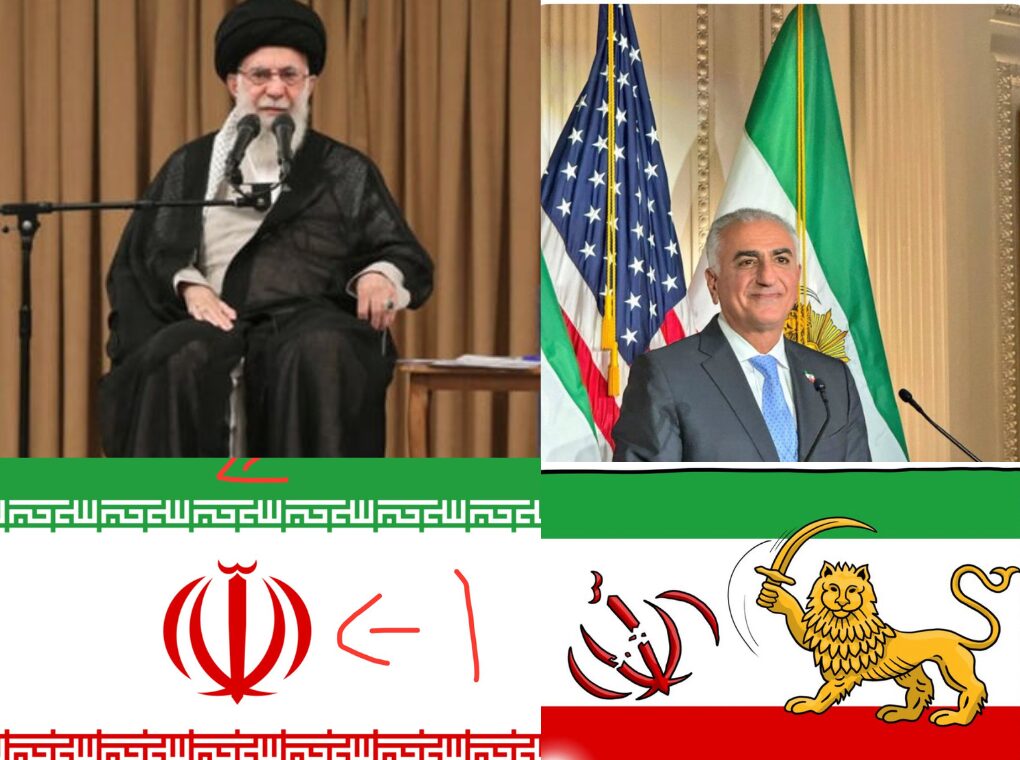On June 13, 2025, Israel launched Operation Rising Lion, a targeted military campaign aimed at neutralizing Iran’s nuclear and missile capabilities while signaling a broader intent to destabilize the current Iranian regime. Prime Minister Benjamin Netanyahu framed the operation as a critical step to “roll back the Iranian threat to Israel’s very survival,” with a stated goal of averting a “nuclear Holocaust.”
The operation’s name and symbolism, rooted in the pre-1979 Pahlavi dynasty’s lion and sword emblem, suggest a deliberate invocation of Iran’s monarchical past, contrasting sharply with the Islamic Republic’s “Allah” emblem and Kufic “Allaho Akbar” script on its flag. This has sparked speculation about Israel’s long-term objectives, including regime change in Tehran.
The operation: Scope and Immediate Impact
Operation Rising Lion began with precise strikes on Iran’s military and nuclear facilities, including key sites in Tehran. Reports indicate that a top Iranian military planner was eliminated, signaling a focus on crippling Iran’s strategic leadership. The operation also targeted oil and gas infrastructure, a move that disrupts Tehran’s primary revenue stream, which funds its nuclear ambitions and regional proxies. According to defense analyst strikes were described as a “surgical” effort to dismantle Iran’s capacity to threaten Israel, with Netanyahu emphasizing that the operation would continue “for as many days as necessary.”
The operation’s immediate effects have been profound. Iran’s ability to project power through its missile program and proxy networks, already weakened since the October 7, 2023, Hamas attack, faces further erosion. The destruction of key infrastructure has also driven up global oil prices, amplifying the economic pressure on Tehran.
Symbolism and Messaging: A Nod to the Pahlavi Era
The name “Rising Lion” carries deep symbolic weight. The lion and sword emblem, central to the Pahlavi dynasty’s flag before the 1979 Islamic Revolution, evokes a secular, nationalist Iran that contrasts with the current theocratic regime. Alleged Israeli communications in Farsi have explicitly highlighted this imagery, depicting the operation as “destroying” the post-1979 “Allah” emblem and removing the Kufic “Allaho Akbar” script from the red and green bands of Iran’s flag. This messaging suggests an ideological challenge to the Islamic Republic’s legitimacy, aligning with the operation’s broader geopolitical aims.
By invoking the Pahlavi era, Israel appears to be appealing to segments of the Iranian population nostalgic for the pre-revolutionary period or disillusioned with the current regime. This symbolic gesture also serves as a psychological operation, potentially encouraging internal dissent within Iran, where economic hardship and political repression have fueled periodic protests.
Regime Change: A Stated or Implied Goal?
While Netanyahu’s official statements focus on neutralizing Iran’s nuclear and military capabilities, some Israeli communications and posts on X suggest a broader ambition: regime change. The operation’s framing as a response to a “new Iranian plan” post-October 7, coupled with the targeting of strategic leadership, points to an intent to weaken the regime’s grip on power. One post on X speculated that Israel’s “main goal” is to “topple/overthrow the current Iran regime,” a sentiment echoed by others who see the operation as a step toward dismantling the Islamic Republic’s political structure.
However, regime change is a high-risk strategy. Iran’s government, despite its internal challenges, maintains a robust security apparatus and a loyal base of support. External military pressure could rally nationalist sentiment, potentially strengthening the regime’s domestic position. Moreover, the absence of a clear opposition movement capable of seizing power complicates the feasibility of regime change as an immediate outcome.
Regional and Global Implications
Operation Rising Lion has heightened tensions in an already volatile region. Iran’s proxies, including Hezbollah and various militias in Iraq and Syria, may retaliate, though their capacity has been diminished by prior Israeli operations. The strikes on Iran’s oil infrastructure have also reverberated globally, contributing to market instability and raising concerns about energy security.
The international response has been mixed. While the United States and some Western allies have expressed tacit support for Israel’s actions, others, including China and Russia, have condemned the strikes as a violation of Iranian sovereignty. The operation’s focus on nuclear facilities has reignited debates over Iran’s nuclear program and the stalled Joint Comprehensive Plan of Action (JCPOA), with some arguing that Israel’s actions could push Iran closer to weaponization.
Conclusion
Operation Rising Lion marks a bold escalation in Israel’s strategy to counter Iran, blending military precision with symbolic messaging. By targeting Iran’s nuclear, military, and economic infrastructure while invoking the Pahlavi era, Israel is not only aiming to neutralize immediate threats but also signaling a desire for fundamental change in Tehran’s governance. Whether this translates into actual regime change remains uncertain, given the complexities of Iran’s internal dynamics and the broader geopolitical landscape. For now, Operation Rising Lion underscores Israel’s determination to reshape the regional balance of power, with consequences that will reverberate for years to come.
